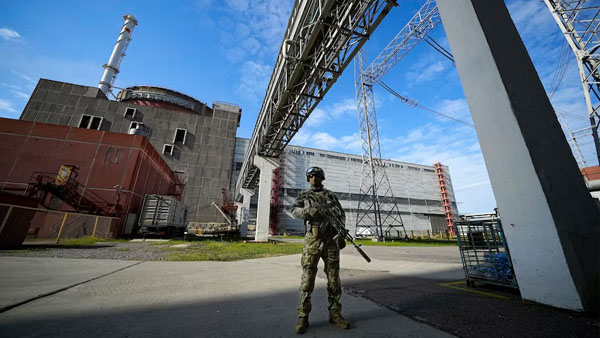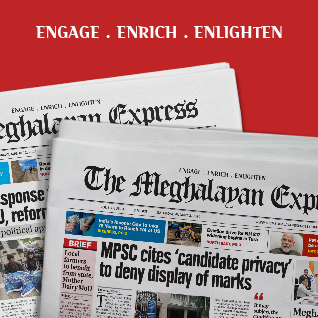By Satyabrat Borah
The Russia-Ukraine conflict has taken a dramatic turn as tensions escalate with Russia’s successful test of a new nuclear-powered cruise missile declared invincible by President Putin. This development alongside Russia’s replenished conventional missile stockpiles and Ukraine’s increasing use of Western weapons intensifies concerns about a wider global conflict and the difficulty of achieving peace. The announcement of this new weapon has sent shockwaves through the international community raising questions about the future of global security and the delicate balance of power. The situation is complex with historical roots, deep geopolitical rivalries and the involvement of major global players making any resolution seem increasingly elusive.
The conflict between Russia and Ukraine has been ongoing since 2014 when Russia annexed Crimea a move widely condemned by the international community. The situation worsened in February 2022 when Russia launched a full-scale invasion of Ukraine citing security concerns and the need to protect Russian-speaking populations. However Ukraine with support from Western nations including the United States and European Union has mounted a fierce resistance. The introduction of a nuclear-powered cruise missile described as invincible by Putin adds a new and dangerous dimension to this war. Such a weapon, if operational , could potentially render traditional missile defense systems obsolete giving Russia a significant strategic advantage.
President Putin’s declaration of the missile’s invincibility is not just a technical claim but also a psychological weapon aimed at deterring adversaries. The term invincible suggests a level of superiority that could intimidate not only Ukraine but also NATO countries that have been providing military aid to Kyiv. This escalation comes at a time when Russia has been replenishing its conventional missile stockpiles indicating a broader military buildup. On the other side Ukraine’s use of advanced Western weapons such as HIMARS rocket systems and Patriot missile defenses has allowed it to counter Russian advances effectively. This tit-for-tat escalation raises the stakes with both sides seemingly preparing for a prolonged conflict.
The international community is deeply concerned about the implications of these developments. The possibility of a nuclear-powered missile being deployed brings the world closer to the specter of nuclear conflict, a scenario that has not been seriously contemplated since the Cold War. Western nations have condemned Russia’s actions imposing sanctions and providing Ukraine with billions of dollars in military and humanitarian aid. However these measures have not deterred Russia which continues to assert its influence in the region. The involvement of Western weapons in the conflict has also drawn criticism from Russia which accuses NATO of escalating the war by proxy. This mutual blame game complicates efforts to find a diplomatic solution.
Achieving peace in this conflict seems more difficult than ever. The introduction of advanced weaponry on both sides has hardened positions with neither Russia nor Ukraine showing significant willingness to compromise. Peace talks have stalled with both sides accusing the other of bad faith. The presence of a nuclear-powered missile in Russia’s arsenal could further embolden Moscow making it less inclined to negotiate. Ukraine on the other hand bolstered by Western support is determined to reclaim all its territory including Crimea and the Donbas region. This mutual intransigence creates a deadlock that is hard to break.
The wider global implications are equally troubling. The Russia-Ukraine conflict is no longer just a regional dispute but a flashpoint that could ignite a larger confrontation involving major powers. NATO’s eastward expansion and its support for Ukraine have long been points of contention with Russia viewing them as threats to its security. The testing of a nuclear-powered missile could be seen as Russia’s response to this perceived encirclement prompting a counter-reaction from the West. If the conflict escalates further there is a risk of drawing in other nations creating a domino effect that could destabilize the global order.
The humanitarian cost of the war is already staggering with thousands of lives lost and millions displaced. The use of advanced weaponry only exacerbates this toll. A nuclear-powered missile if used would have catastrophic consequences not just for Ukraine but for the region and beyond. The environmental impact alone could be devastating with radioactive fallout affecting vast areas. This possibility underscores the urgency of finding a peaceful resolution yet the current trajectory suggests that military solutions are taking precedence over diplomacy.
Historical parallels offer some insight into the current crisis. The Cold War era saw similar escalations with the United States and Soviet Union engaging in an arms race that included nuclear weapons. Deterrence through mutually assured destruction prevented direct conflict but the proxy wars in places like Vietnam and Afghanistan caused immense suffering. Today the Russia-Ukraine war could be seen as a modern proxy conflict with the potential to spiral out of control. The difference lies in the proximity to Europe and the involvement of a nuclear power making the stakes higher than ever.
Public opinion both within Russia and Ukraine and globally plays a crucial role. In Russia state-controlled media portrays the war as a necessary defense against Western aggression bolstering domestic support for Putin despite economic hardships caused by sanctions. In Ukraine the resilience of the population and the leadership of President Zelensky have galvanized national unity and international sympathy. Globally opinions are divided with some nations calling for stronger action against Russia while others advocate for neutrality to avoid escalation. This polarization makes consensus on a peace plan challenging.
The role of diplomacy cannot be overstated yet it faces significant hurdles. International bodies like the United Nations have been unable to enforce resolutions due to veto power in the Security Council. Backchannel negotiations and ceasefire agreements have been attempted but often collapse under renewed fighting. The introduction of a nuclear-powered missile could shift the dynamics further complicating diplomatic efforts. It may require a new approach involving neutral mediators and a willingness from all sides to de-escalate something that seems distant given current attitudes.
The future remains uncertain. The testing of the invincible missile could be a bluff to assert dominance or a genuine step toward deployment. Russia’s replenished stockpiles and Ukraine’s Western-supplied arsenal suggest that both sides are preparing for a long haul. The international community must balance supporting Ukraine’s sovereignty with preventing a global conflict. This delicate dance requires leadership vision and a commitment to dialogue over destruction.
The escalation of the Russia-Ukraine conflict with Russia’s new nuclear-powered cruise missile and the intensifying military buildup on both sides heightens fears of a wider war. The difficulty of achieving peace is compounded by historical grievances, geopolitical rivalries and the involvement of advanced weaponry. While the human and environmental costs mount, the need for a diplomatic breakthrough is more pressing than ever. The world watches as this crisis unfolds hoping that reason will prevail over the march toward further devastation. The path to peace is fraught with challenges but it remains the only viable option to prevent a catastrophe that could affect generations to come.




